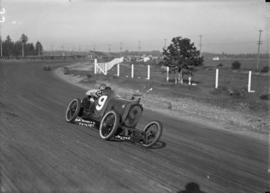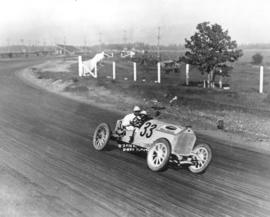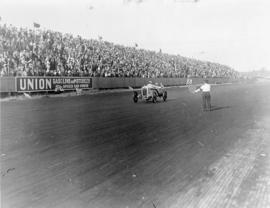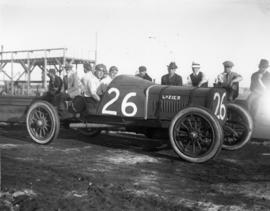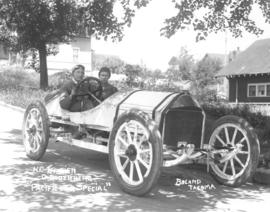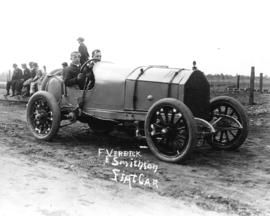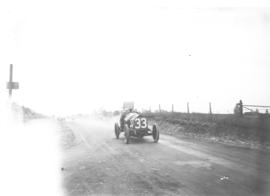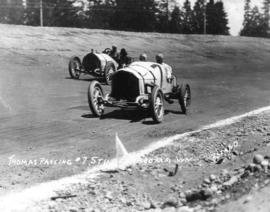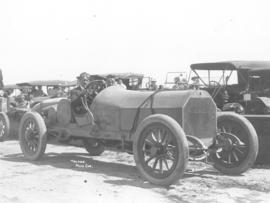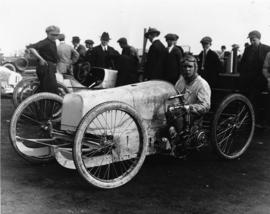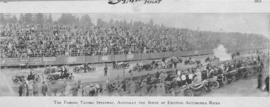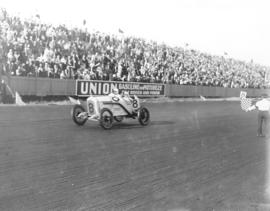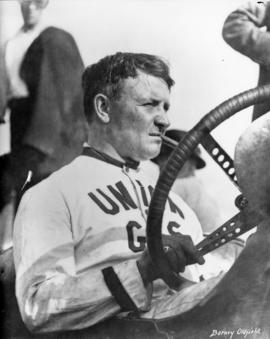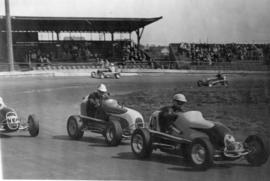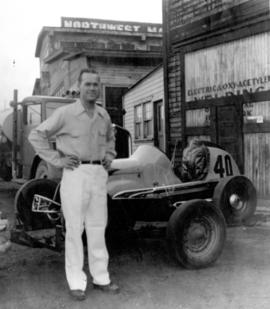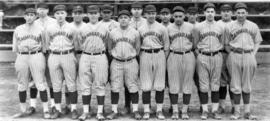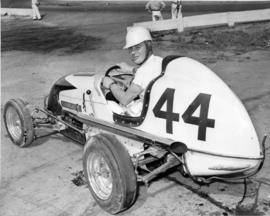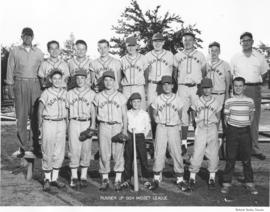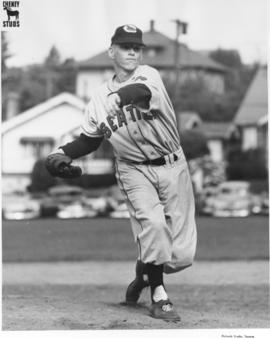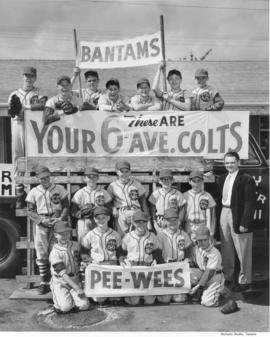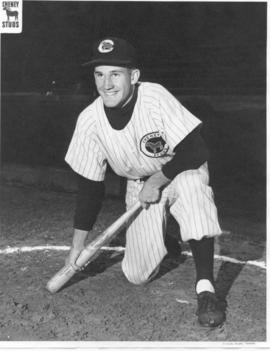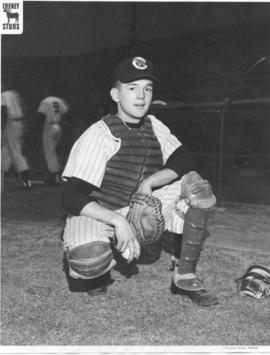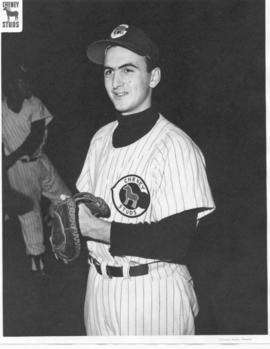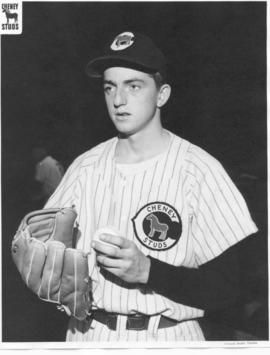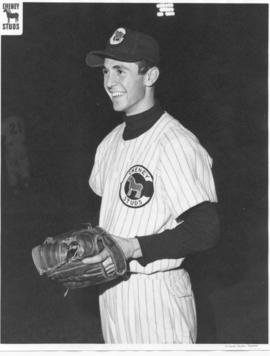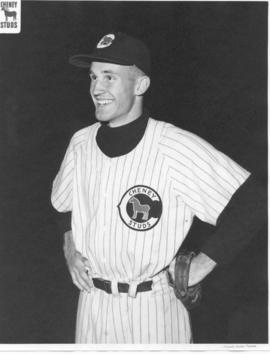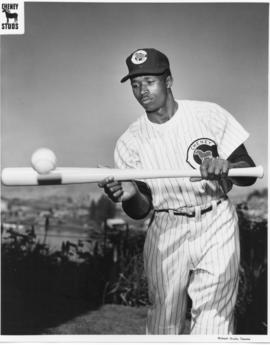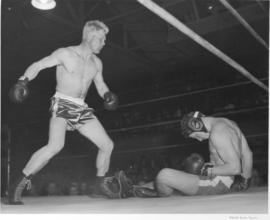- Item
- 1915
Part of Marvin Boland Photographs
ca. 1915. Bob Burman sails around a curve at the Tacoma Speedway behind the wheel of his Peugeot, #9. The photograph was probably taken at the July 4, 1915 Montamarathon Classic in which Burman finished fourth. Burman broke into racing as the driver of a Buick, part of a team including Louis Chevrolet and Lewis Strang. The trio won more races and broke more records than any team racing. After Chevrolet retired and Strang was killed, Burman struck out on his own. He set the speed record on Daytona Beach, one mile in 25 2/5 seconds at 141 mph, earning the title "Speed King." His most prominent characteristic as a driver was his fearlessness. He was killed in a crash in Corona, California in 1916. TPL-2949 (Tacoma Tribune 7/4/1915, pg. 12)
Burman, Bob; Tacoma Speedway (Lakewood); Racetracks--Lakewood--1910-1920; Automobile racing--Lakewood--1910-1920;
